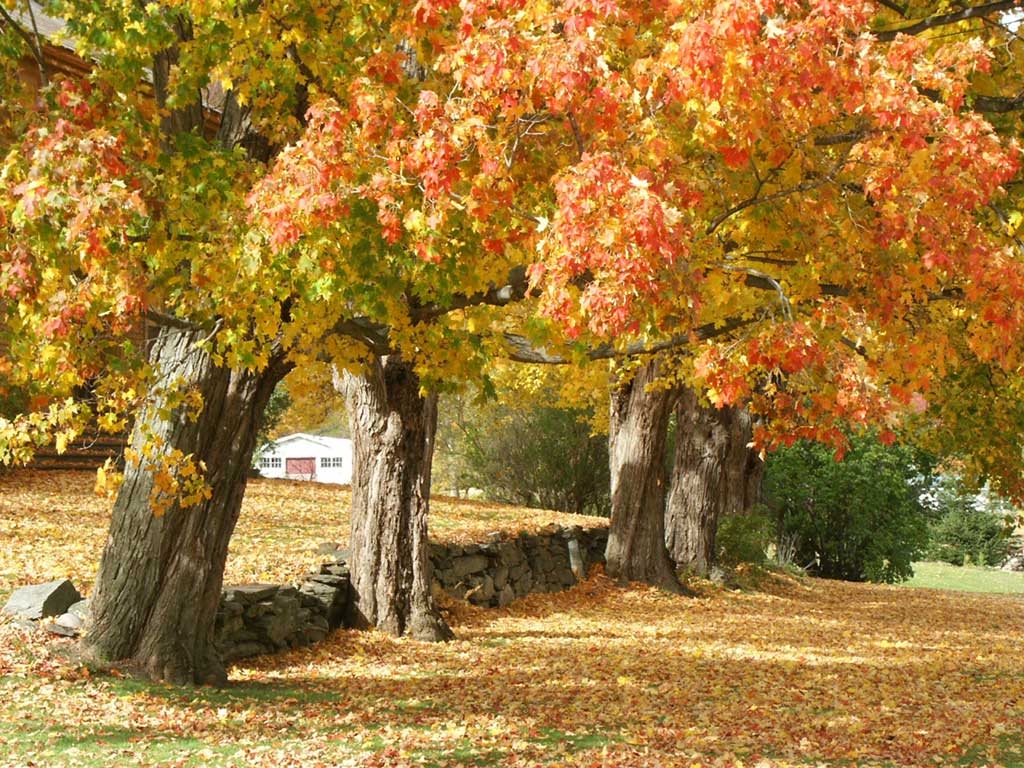What does it take for brilliant fall leaf color?
Return to tree and shrub agent articles
The arrival of fall includes crisp temperatures and falling leaves. Will this year be a season filled with color? Our hit and miss weather patterns make it difficult to predict the intensity of fall color in Kansas City. Why some leaves become brilliantly tinged with fall color is determined by science and the environment.
Chlorophyll in the leaves produces natural sugars required for plant growth and gives leaves their green appearance. Other pigments in the foliage include carotenoids and anthocyanins. All trees contain chlorophyll, but whether a tree possesses carotenoids or anthocyanins depends on plant genetics.
Carotenoids are responsible for yellow and orange pigments in the changing leaves. These colors reveal themselves when chlorophyll production stops in the fall. Anthocyanin pigments result in the development of purple and red fall colors. These pigments form when sugars become trapped in the leaf.
Long nights and cooler temperatures lead to two changes in the leaf: chlorophyll production stops and an abscission layer develops. This layer seals off the nutrient flow from the leaf to the branch, trapping sugars and causing the leaf to drop.
This natural process is impaired by cloudy, rainy days and rapid temperature changes. Freezing conditions halt the process, resulting in a lack of pigment development and an improper abscission layer. If this layer does not form, the leaves wither without falling and hang on the trees long into winter with a dull, brown color. This phenomenon is referred to as a marcescent autumn.
Fall color is also determined by environmental conditions not only in fall but all summer long. The best fall color begins during the summer months with ample rainfall. Late summer and fall rain is accompanied by cloudy weather, reducing pigment development. Cool temperatures and bright sunny days in September and October are the ideal combinations for stunning fall color.
Genetics or tree species is the other factor in color changes. The Kansas City area is not known for native species that develop anthocyanins. Native species like elm, oak, hickory, hackberry, redbud and sycamore found in our woodlands genetically produce more carotenoids. This results in shades of yellow. A few native species like sumac, vining Virginia creeper and poison ivy tend to develop shades of purple and red.
Introduced non-native species are striking in the landscape as they produce more anthocyanins resulting in the purples and reds. These species include red maple, sugar maples, sweetgum and black gum. Many shrubs like burning bush, viburnums, spirea and fothergilla are planted for fall color.
It is challenging to predict peak fall color in Kansas City as weather patterns play a large role. Typically, color develops in the third or fourth week of October and continues into early November.
As you can see each year is different based on summer and fall weather patterns. Will conditions be favorable for a brilliant fall season? Only time will tell if the trees will be an impressive show or less than spectacular.
Other Resources
Assessing Tree Damage
Selecting a Reputable Tree Service
- How to Contact an Arborist
- Selecting a Certified Arborist in Kansas
- Verify an ISA Certification / Find a Tree Care Service
Tree Trimming
Contact Us
Have questions? The Garden Hotline is staffed by trained EMG volunteers and Extension staff who will assist you with questions.
Phone: (913) 715-7050
Email: garden.help@jocogov.org
